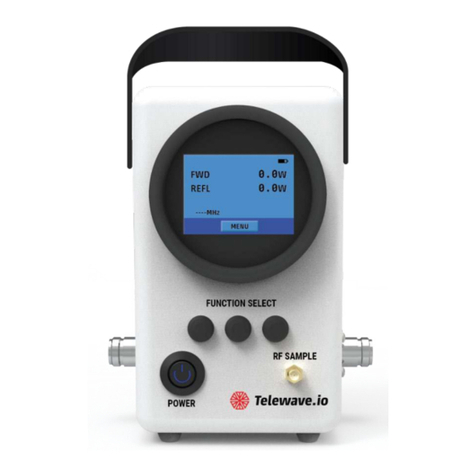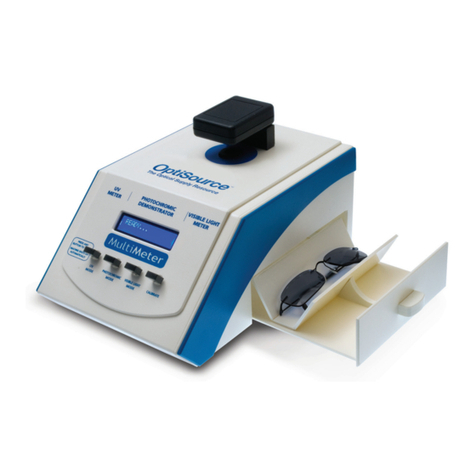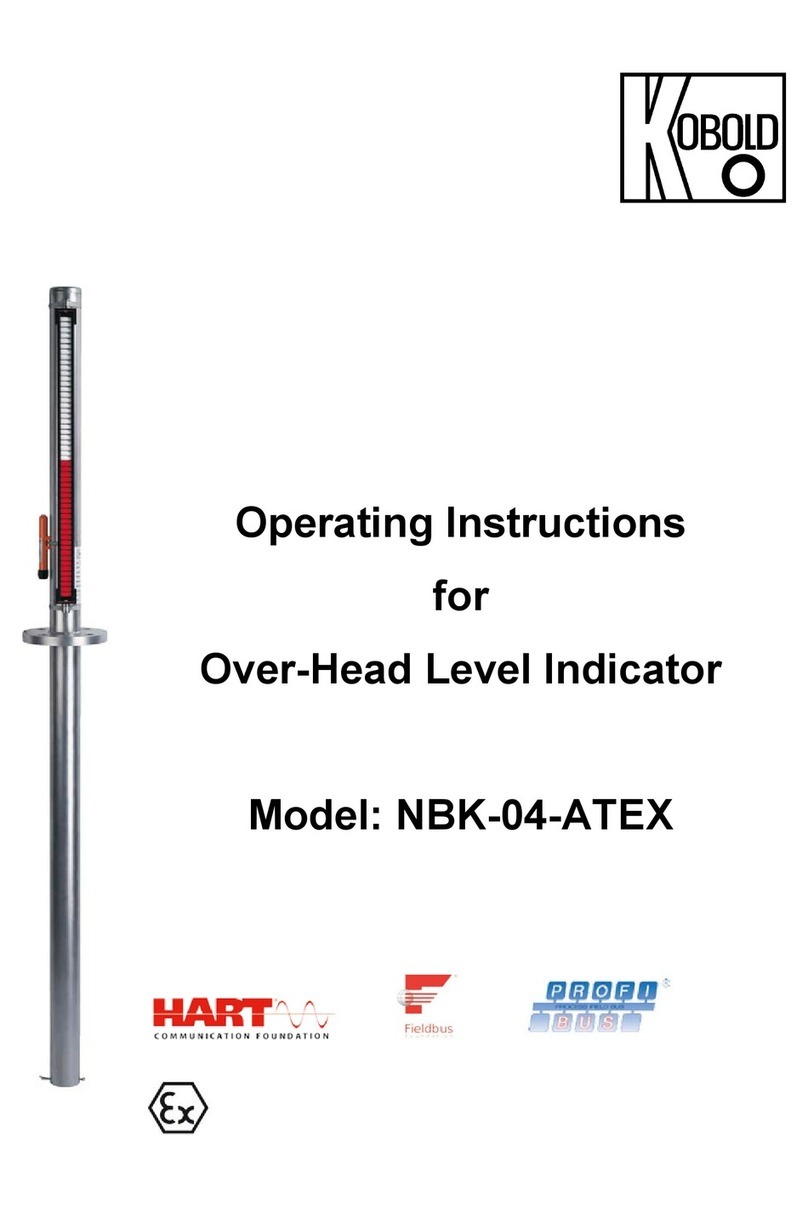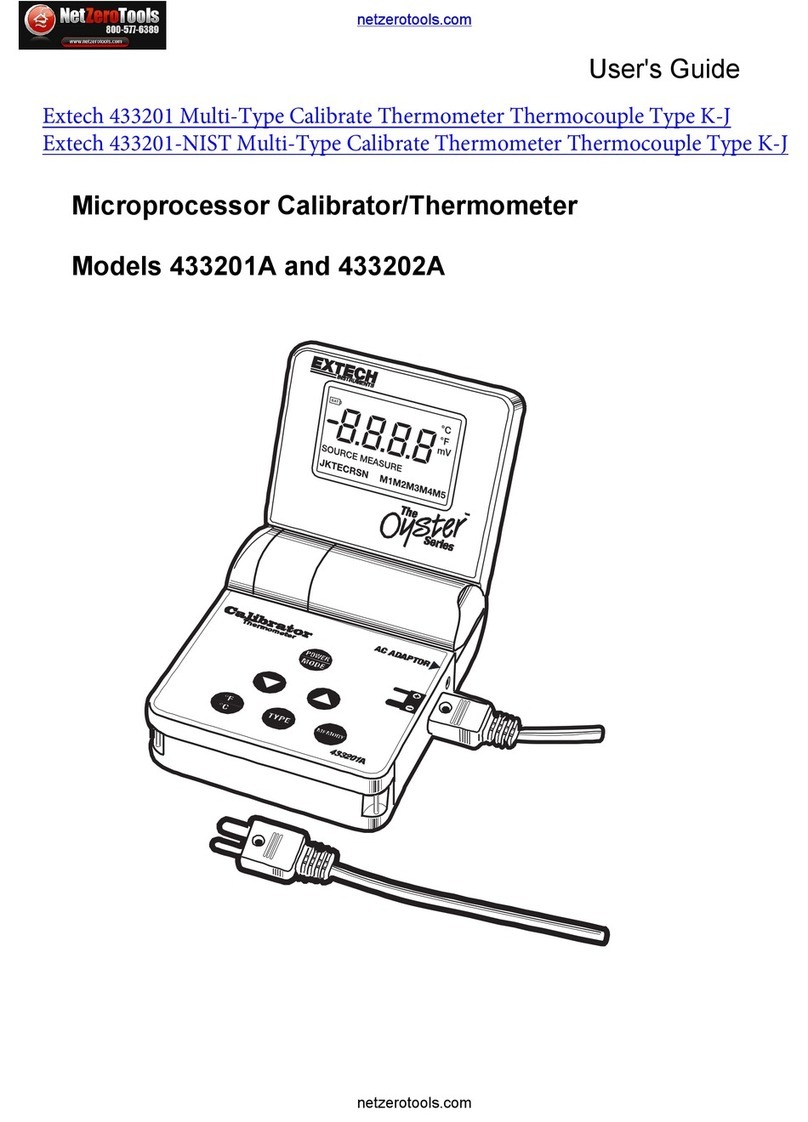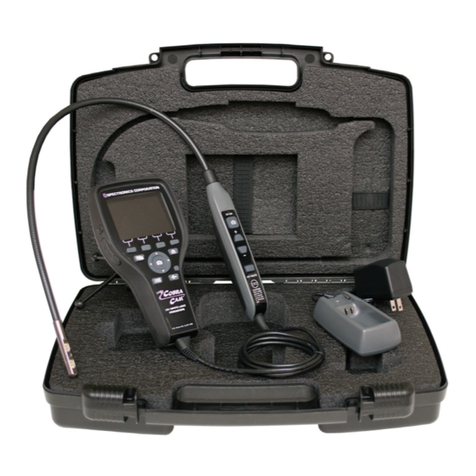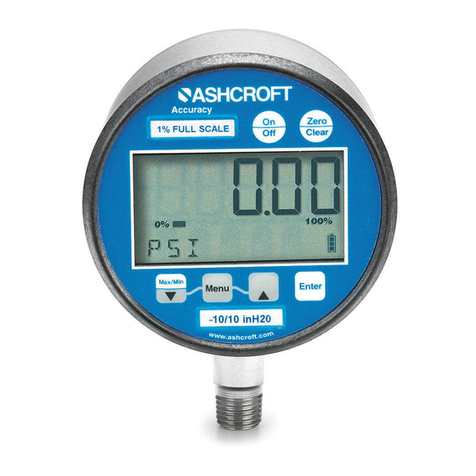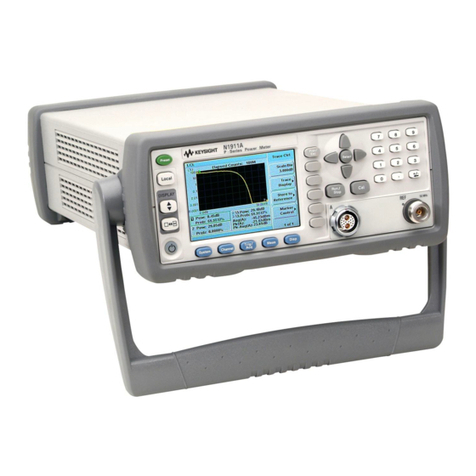Solartron 1253A User manual

solartron
analytical
1253A
Gain-Phase Analyzer
OPERATING MANUAL


solartron
analytical
1253A
GAIN-PHASE ANALYZER
OPERATING MANUAL
Part No. 12530007
Issue: EA
Date: November 2017
Solartron Analytical Ltd © 2005

SolartronAnalytical
5 Ashville Way, Molly Millars Lane,
Wokingham, Berkshire, RG41 2PL, UK
Tel +44 (0) 1252 556 800
E-mail [email protected]
Web: http://www.ameteksi.com
For details of our agents in other countries, please contact our UK office.
Solartron pursues a policy of continuous development and product improvement.
The specification in this document may therefore be changed without notice.

solartron
analytical
Solartron Analytical
5 Ashville Way, Molly Millars Lane,
Wokingham, Berkshire, RG41 2PL, UK
Tel +44 (0) 1252 556 800
9
DECLARATION OF CONFORMITY
The directives covered by this declaration
73/23/EEC Low voltage Equipment Directive, amended by 93/68/EEC
89/336/EEC Electromagnetic Compatibility Directive, amended by 92/31/EEC & 93/68/EEC
Product(s)
1253AGain-Phase Analyzer
Basis on which conformity is being declared
The product(s) identified above comply with the requirements of the EU directives by meeting
the following standards:
EN50081-1:1992 Electromagnetic Compatibility – Generic Emission Standard
Part 1:Residential, commercial and light industry.
EN50082-1:1992 Electromagnetic Compatibility – Generic Immunity Standard
Part 1:Residential, commercial and light industry.
EN61010-1:1993 Safety requirements for electrical equipment for measurement,
control and laboratory use.
Accordingly the CE mark has been applied to this product.
Signed For and on behalf of Solartron Analytical, a division of Solartron Group Limited
Authority: Engineering Manager
Date: December 1995


Safety.i
GENERAL SAFETY PRECAUTIONS
The equipment described in this manual has been designed in accordance with
EN61010 "Safety requirements for electrical equipment for measurement, control and
laboratory use", and has been supplied in a safe condition. The equipment is intended
for electrical measurements only. It should be used for no other purpose.
To avoid injury to an operator or service technician the safety precautions given below,
and throughout the manual, must be strictly adhered to, whenever the equipment is
operated, serviced or repaired. For specific safety details, please refer to the relevant
sections within the manual.
Solartron accept no responsibility for accidents or damage resulting from any failure to
comply with these precautions.
GROUNDING
To minimise the hazard of electrical shock, it is essential that the equipment be
connected to a protective ground through the ac supply cable. The continuity of the
ground connection should be checked periodically.
AC SUPPLY VOLTAGE
Never operate the equipment from a line voltage or frequency in excess of that
specified. Otherwise, the insulation of internal components may break down and cause
excessive leakage currents.
FUSES
Before switching on the equipment, you should check that fuses of the correct rating are
fitted. The rating of the ac line fuse must accord with the voltage of the ac supply.
The fuses are accessible from the exterior of the equipment. Should any fuse
continually blow, do not insert a fuse of a higher rating. Switch the equipment off,
clearly label it "unserviceable" and inform a service technician.
EXPLOSIVE ATMOSPHERES
YOU MUST NEVER operate the equipment, or any sensors connected to the
equipment, in a potentially explosive atmosphere. The equipment is NOT intrinsically
safe and you could possibly cause an explosion.
SAFETY SYMBOL
For the guidance and protection of the user, the following safety symbol appear on the
equipment:
Symbol Meaning
Refer to user guide for detailed instructions of use. In particular,
note the maximum voltage permissible at the input sockets as
detailed in the Specification.
Continued overleaf.
!

Safety.ii
General Safety Precautions (continued from previous page)
NOTES, CAUTIONS AND WARNINGS
For the guidance and protection of the user, Notes,Cautions and Warnings appear
throughout the manual. The significance of these is as follows:
NOTES highlight important information for the reader's special attention.
CAUTIONS guide the reader in avoiding damage to the equipment.
WARNINGS guide the reader in avoiding a hazard that could cause injury or
death.
AVOID UNSAFE EQUIPMENT
The equipment may be unsafe if any of the following statements apply:
• Equipment shows visible damage.
• Equipment has failed to perform an intended operation.
• Equipment has been stored in unfavourable conditions.
• Equipment has been subjected to severe physical stress.
If in any doubt as to the serviceability of the equipment, don't use it. Get it properly
checked out by a qualified service technician.
LIVE CONDUCTORS
When the equipment is connected to its measurement inputs or supply, the opening of
covers or removal of parts could expose live conductors. The equipment must be
disconnected from all power and signal sources, before it is opened for any
adjustment, replacement, maintenance or repair. Only qualified personnel, who
should refer to the relevant maintenance documentation, must do adjustments,
maintenance or repair.
EQUIPMENT MODIFICATION
To avoid introducing safety hazards, never install non-standard parts in the
equipment, or make any unauthorised modification. To maintain safety, always return
the equipment to Solartron for service and repair.


1253 Op Man_DA
Chapter 7
1
2
3
4
5
6
7
8
RS423; Printer Interface
Introduction
Standards
Connections
Baud Rate
ASCII Output to a Printer
Output of Status Information
Printing Learnt Programs
Printing the History File
Page
7.2
7.2
7.2
7.3
7.3
7.3
7.3
7.3
Chapter 8
1
2
3
4
5
6
7
8
9
10
Remote Control-GPIB
Introduction and Standards
Connections
GPIB Switches
Remote/Local Facility
1253 Remote Control Commands
Interrogating Parameters
Measurement Output
Serial Poll/Parallel Poll
GPIB Plotting
Controller: Program Examples
8.2
8.3
8.3
8.5
8.7
8.14
8.14
8.17
8.19
8.20
Chapter 9
1
2
Error / Warning Codes
Introduction
Error / Warning Code Summary-
9.2
9.3
Chapter 10
1
2
Synchronizer and
Modulator / Demodulator
Synchronizer
Modulator / Demodulator
10.2
10.4
Chapter 11
1
2
3
4
Learnt Programs
Learnt Program Facilities
Programming from the Front Panel
Program Example
Remote Programming
11.2
11.3
11.9
11.16
Chapter 12 Specifications
Index




[Chapter 1]
1.4 1253 Op Man_DA
3 FACILITIES
• LED annunciated keyboard with bright 40-character vacuum fluorescent display
• Menu-driven hardware and processing control
• Learnt program facility
• Battery maintained memory, capable of storing learnt progra ms and menu settings
for typically 1000 hours, with no mains power supply, at 20°C. This could be
reduced at higher temperatures.
• Comprehensive self-test routines
• History file
• Comprehensive plotting facilities
• GPIB interface for remote control or driving external devices (plotters, printers
etc.)
• RS423 interface for driving an external printer
• Mathematical processing and manipulation of data including display of results in
Cartesian, polar or log polar form
• Synchronizer, used where the 1253 cannot stimulate the system under test. Instead,
the reference signal used by the analyzer channels is synchronized to a suitable
signal already in the system.
• Modulator/Demodulator, for making measurements on ac carrier systems


[Chapter 2]
2.2 1253 Op Man_DA
1 ACCESSORIES
The 1253 accessories are supplied with the instrument. They comprise:
a. 2 fuses, 20mm × 5mm, T1.6A, for 220V or 240V supplies
b. 2 fuses, 20mm × 5mm, T3.15A, for 100V or 120V supplies
c. 4 fuses, 20mm × 5mm, 400mA, for the Generator output
d. 2 rack mounting brackets
e. 1 slide mounting bar, for telescopic slide rack mounting
f 4 screws, M4 × 12 countersunk, to fix item e
g. 3 twin 4mm to 4mm connecting leads for front panel connections
An ac supply lead, appropriate to the destination country, is packed with the instrument.
If ordered with the 1253, a telescopic rack slide mounting kit (option 12535B) is also
packed.
2 SAFETY
The 1253 is designed in accordance with the EN61010, ‘Safety Requirements for
Electrical Equipment for Measurement, Control and Laboratory Use’, and is supplied in
a safe condition. This operating manual contains information and warnings that must be
followed by the user to ensure safe operation and to keep the equipment in a safe
condition.
The operating instructions include safety precautions where appropriate, but the
principal ones are also listed below.
2.1 GENERAL SAFETY PRECAUTIONS
1. Before switching on, ensure that the mains lead is connected to the ac supply in
accordance with the colour code.
2. Ensure that the mains voltage selector is correctly set.
3. Ensure that the mains plug is connected only to a mains outlet that has a protective
earth (ground) contact. This applies equally if an extension lead is used: the lead
must contain an earth conductor.
4. To effect earthing, the mains plug must he inserted before connections are made to
measuring and control circuits. The mains plug or external earth (as appropriate)
must remain connected until all measuring and control circuits have been
disconnected.
5. Any interruption of the earth connection (inside or outside the 1253) is prohibited.
6. When the 1253 is connected to the ac supply, the opening of covers or removal of
parts could expose live conductors. The 1253 should be disconnected from all
voltage sources before it is opened for any adjustment, replacement, maintenance
or repair. The user should not attempt adjustments, maintenance or repair of the
1253 when it is powered. If repairs are necessary, consult a Solartron Service
Centre.



[Chapter 2]
1253 Op Man_DA 2.5
2. Lever the hinged flap open with a screwdriver and lift out the voltage selector
roller block.
3. Refit the block with the chosen voltage value facing outwards.
4. Check that the fuses fitted are of the correct value (Section 4.2 below) and, if
necessary, change them.
5. Close the flap securely, checking that the correct value shows through the aperture.
6. Plug in the mains connector again.
4.2 MAINS FUSES
Live and Neutral are both fused in the 1253. Fig. 2.1 shows how these fuses are
accessed, after the mains connector has been unplugged. The arrowheads marked on
each fuseholder must align with those on the flap when the fuseholders are refitted.
The fuse values are:
T1.6A, for 220V or 240V setting
T3.15A, for 100V or 120V setting
Replacement fuses must be 20mm × 5mm cartridge type.
4.3 MAINS LEAD
An ac mains connector lead, complete with a mating socket for the IEC plug on the 1253
mains input unit, is supplied appropriate to the destination country.
This lead should be connected to the user's ac supply according to the following colour
code:
BROWN =LIVE
BLUE =NEUTRAL
GREEN/YELLOW =EARTH
An IEC socket and lead other than the one supplied may be used, but it must be correctly
wired as shown in Fig 2.2.
Fig 2.2 IEC power socket connections.

[Chapter 2]
2.6 1253 Op Man_DA
4.4 CONNECTION PROCEDURE
1. Before connecting the supply, ensure that the mains voltage selector on the rear
panel is correctly set (Section 4.1), and that the fuses fitted in the mains input unit
are correctly rated (Section 4.2).
2. Ensure that the power on/off switch is ‘off’. This switch is located next to the
mains input unit on the rear panel.
3. Connect the mains lead.
4. Switch the 1253 ‘on’ at the rear panel.
5 REPLACING GENERATOR FUSES
Two 400mA fuses protect the 1253 Generator, one in series with the Hi output and one
in series with the Lo. If the Generator appears to be inoperative, before inspecting or
replacing these fuses, check the following points:
a. Is the Generator ‘on’? If not, press SINGLE or RECYCLE.
b. Are all connections with the system under test OK?
c. Is the Generator menu set correctly, with the Amplitude parameter non-zero?
Refer to Chapters 3 and 5 for procedure.
d. Is the START/STOP input on the rear panel being held low?
e. Disconnect the 1253 from the system under test. Set up a measurement and
confirm the Generator is inoperative by monitoring the output with an oscilloscope
or suitable voltmeter.
If none of these indicate a problem external to the Generator then one or more of the
Generator fuses may have failed. This may be because the Generator output has been
subjected to a large external voltage in the system under test. Refer to Chapter 12:
Specifications, for Generator capabilities.
To replace or inspect the fuses follow the procedure described in Section 4.1.
Table of contents
Other Solartron Measuring Instrument manuals
Popular Measuring Instrument manuals by other brands
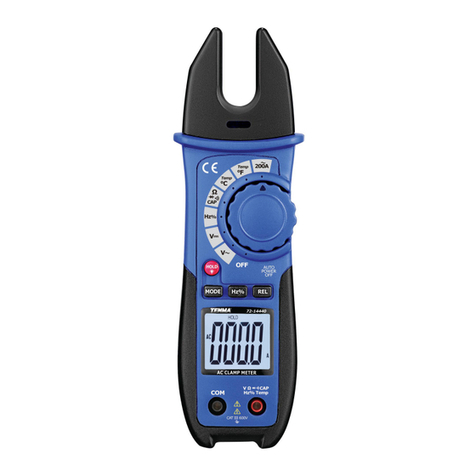
Tenma
Tenma 72-14440 user manual

Dwyer Instruments
Dwyer Instruments 45158 Specifications-installation and operating instructions
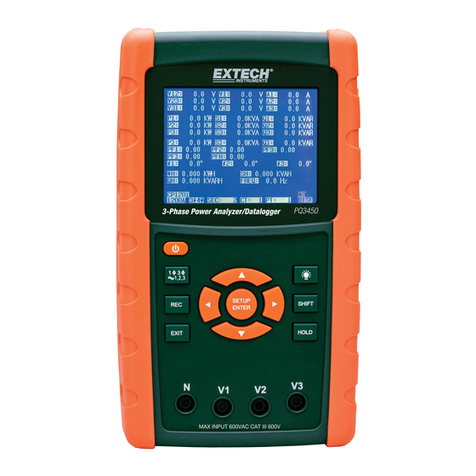
Extech Instruments
Extech Instruments PQ3450-30 user manual

Twinno
Twinno T4000 operating manual
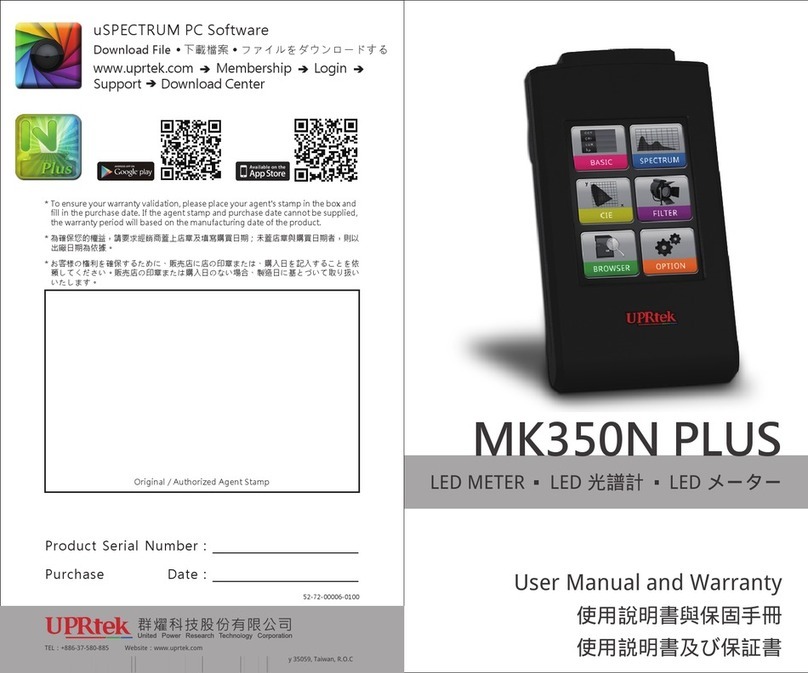
UPRtek
UPRtek MK350N PLUS User manual and warranty
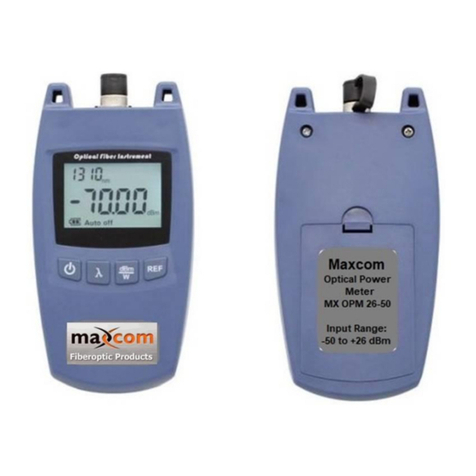
Maxcom
Maxcom MXOPM26-50 Series Technical specification



